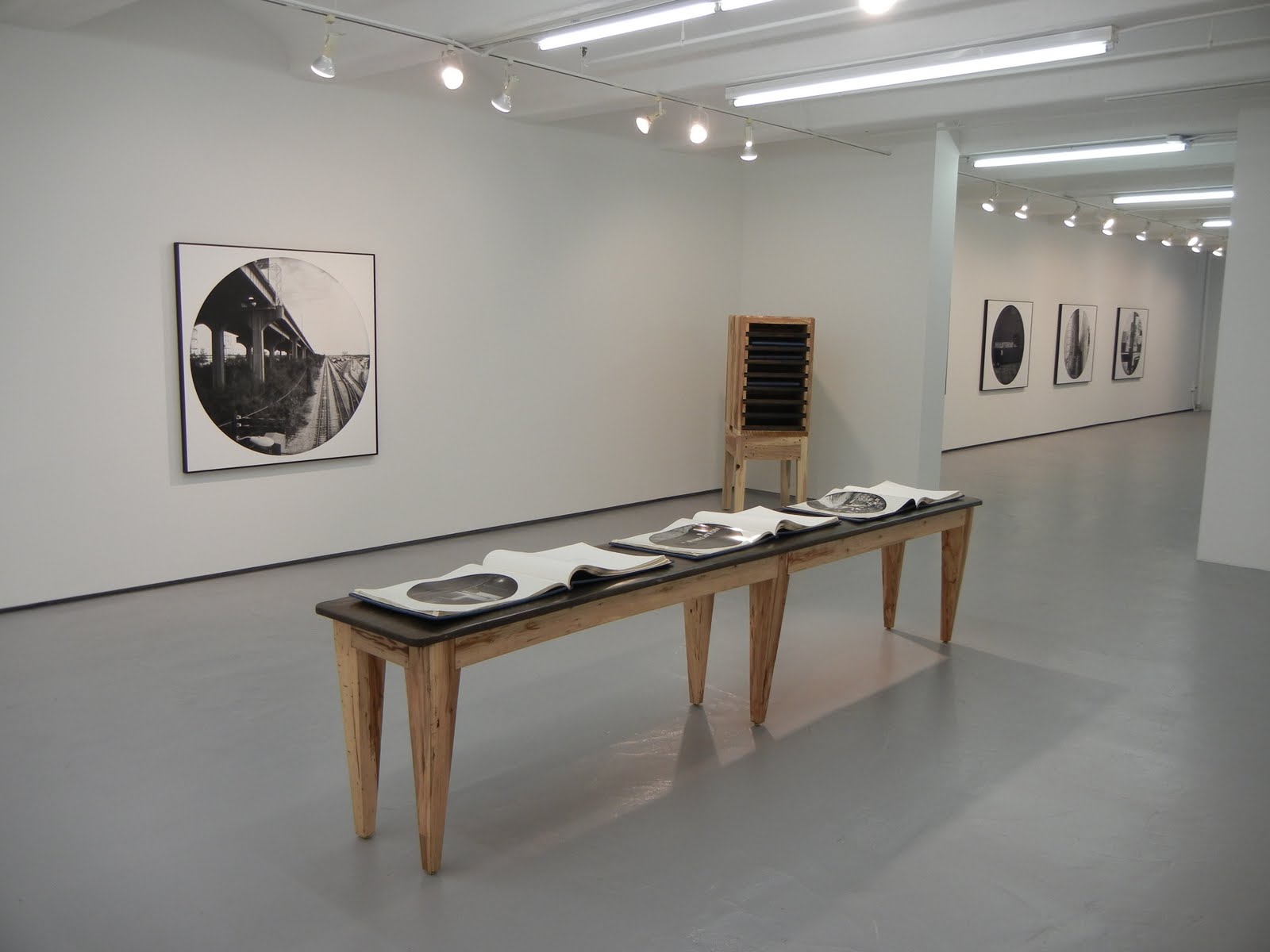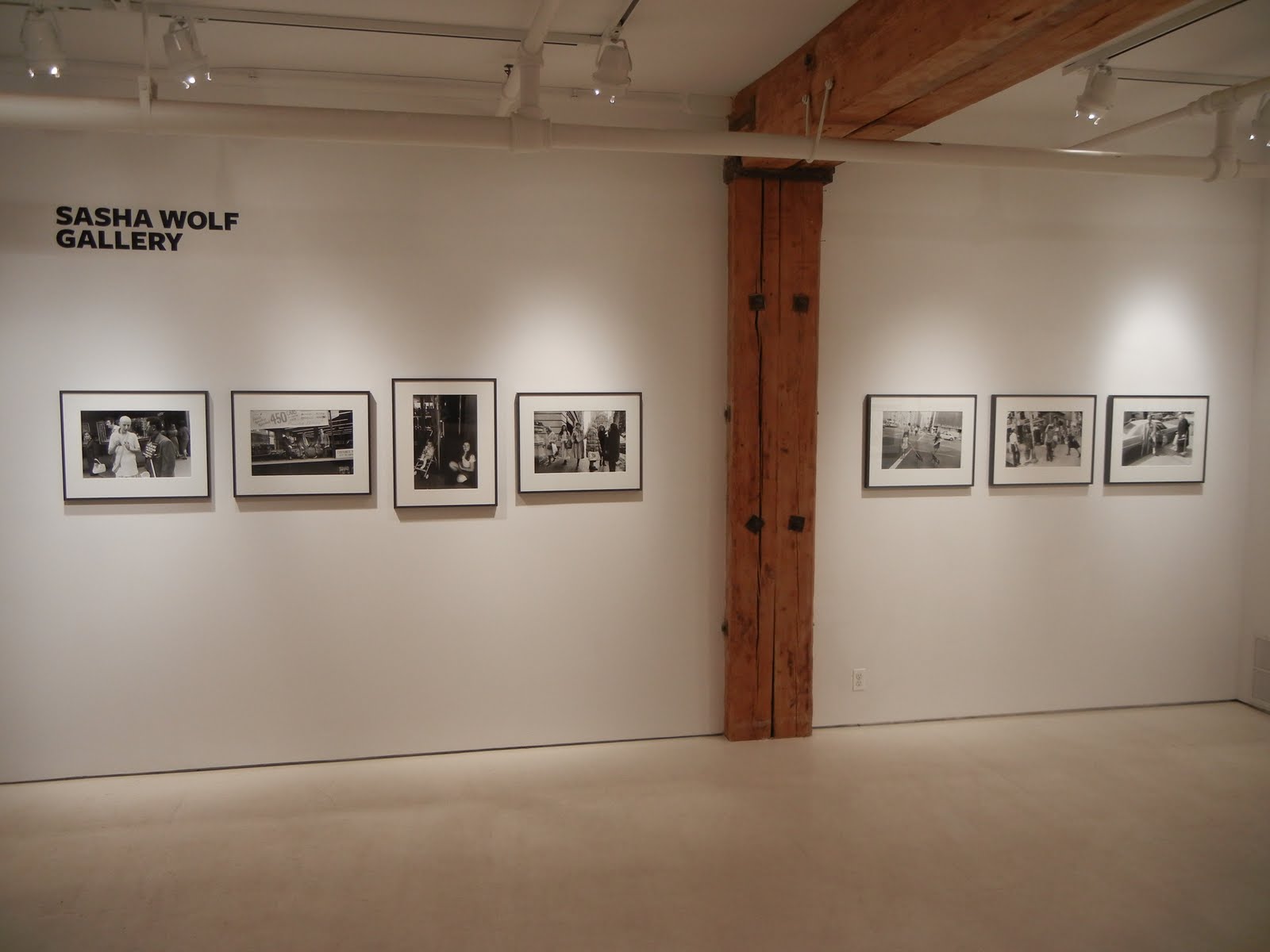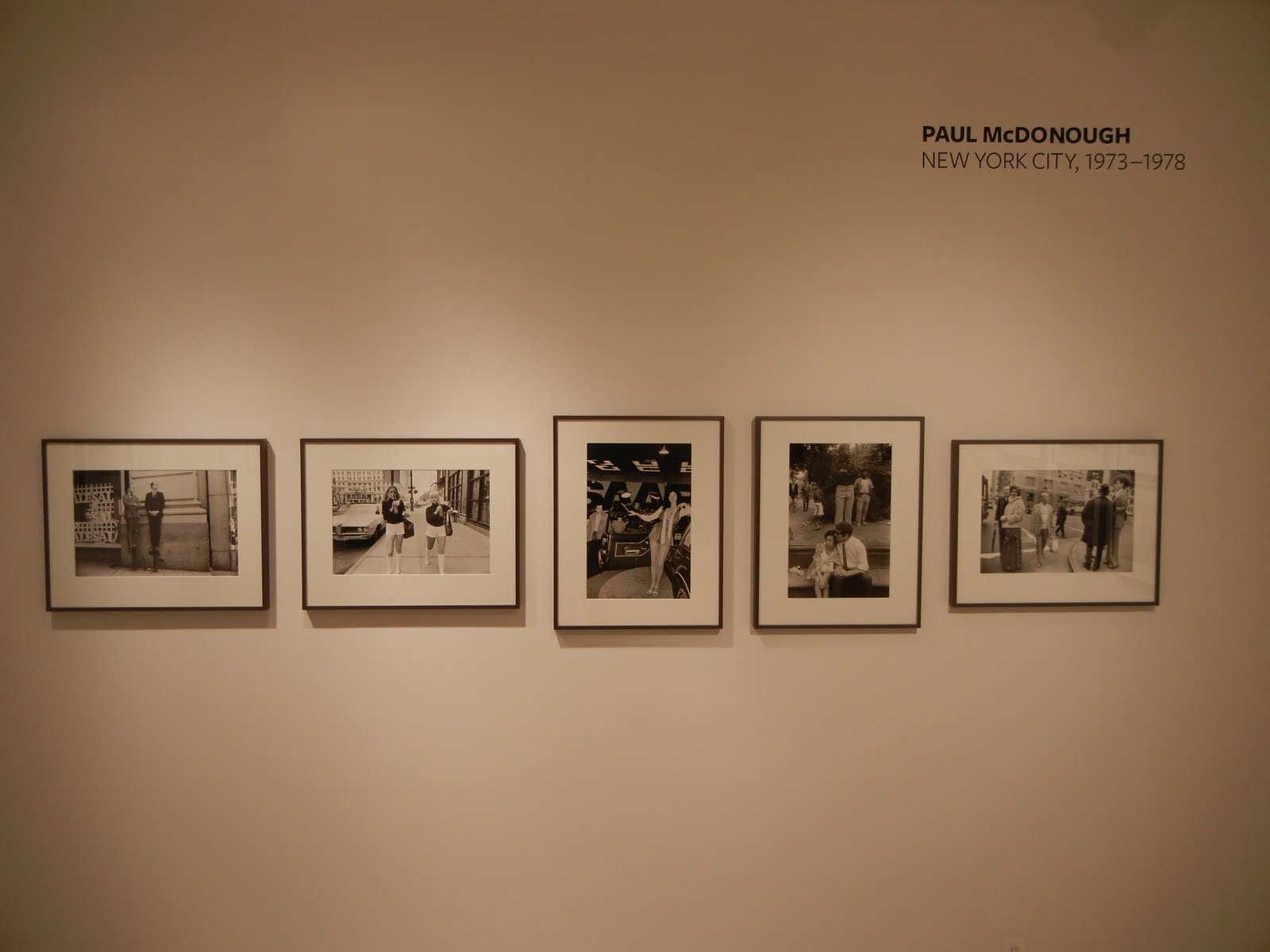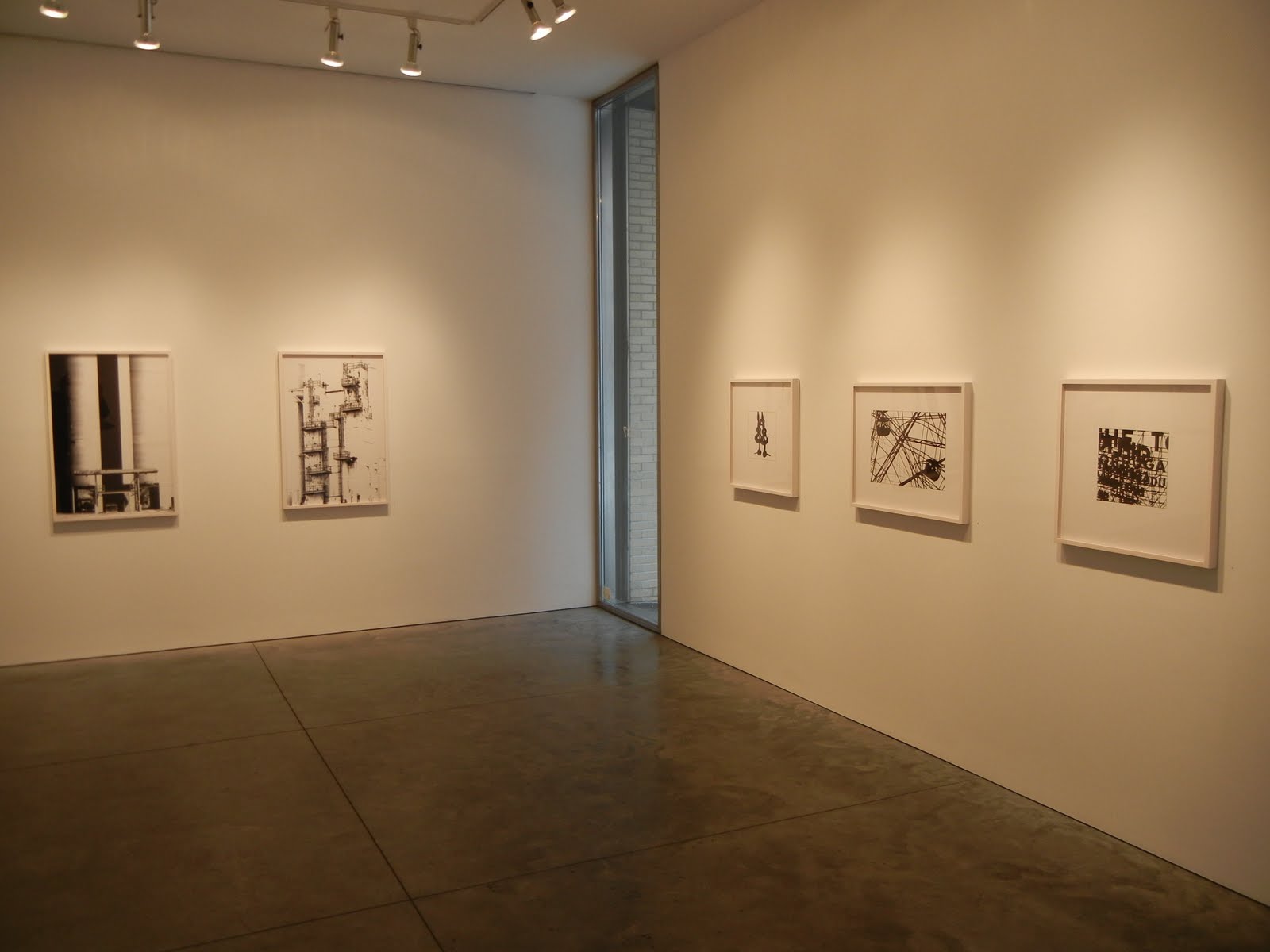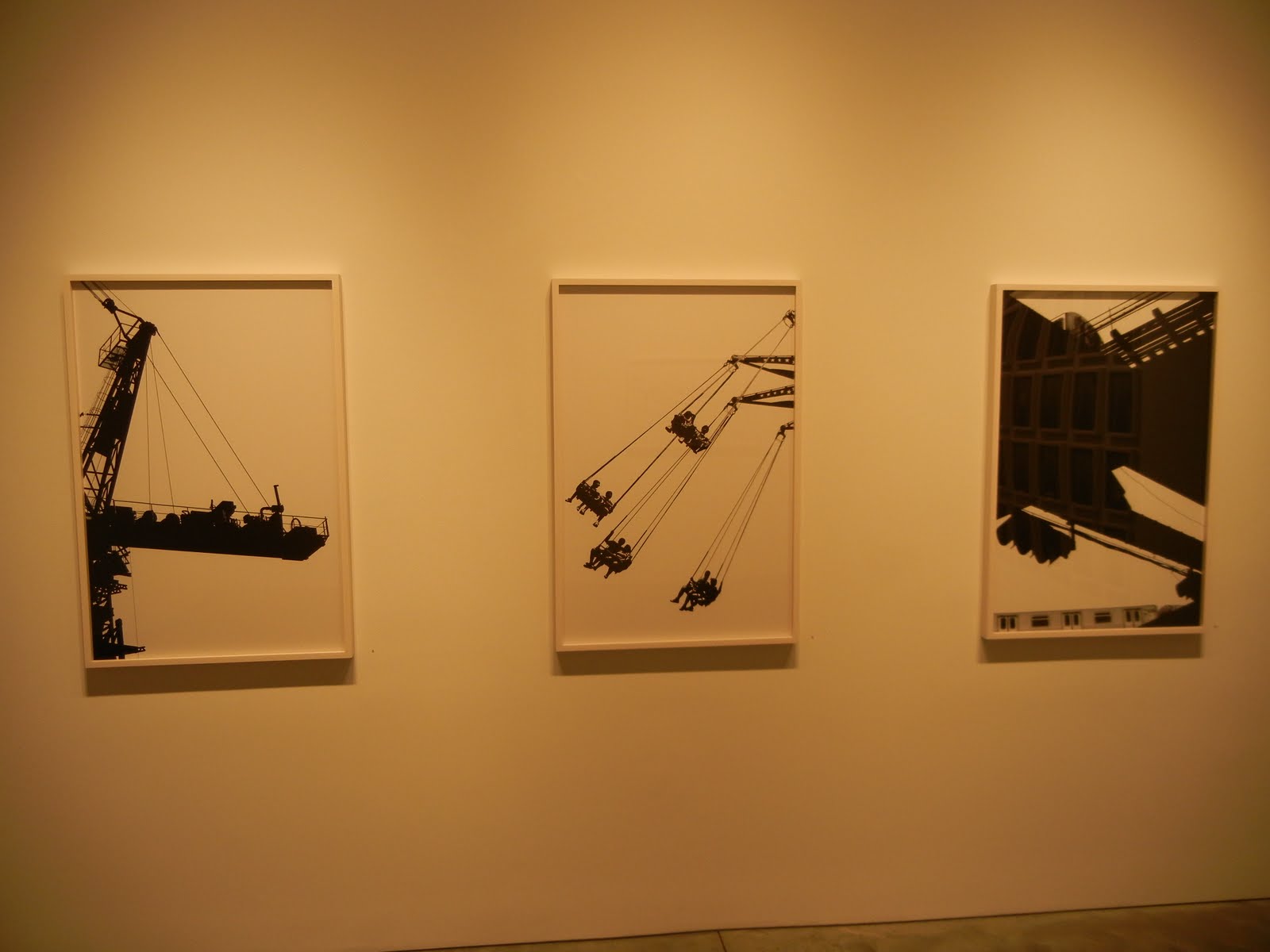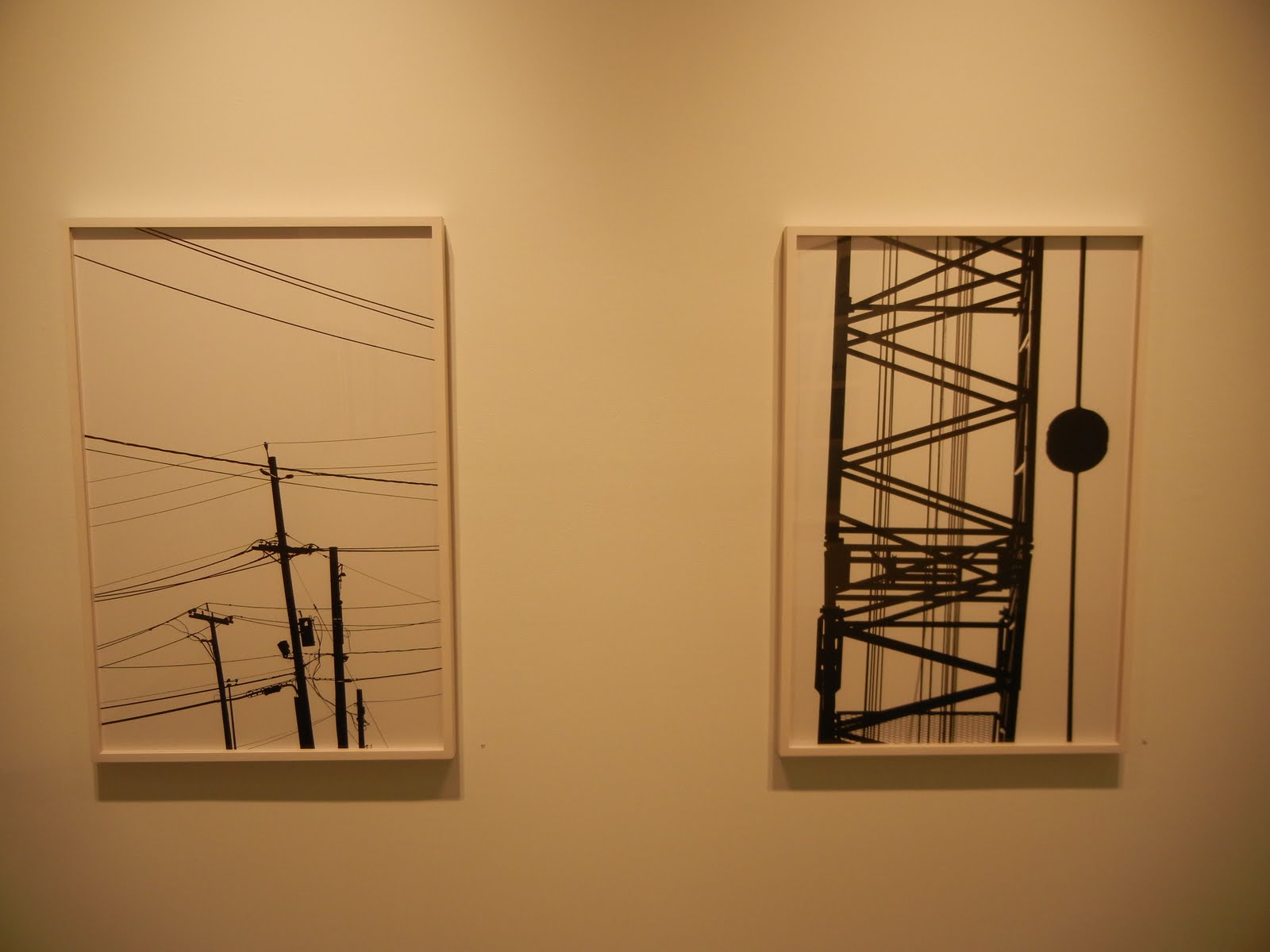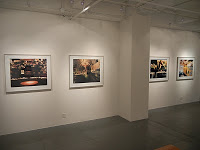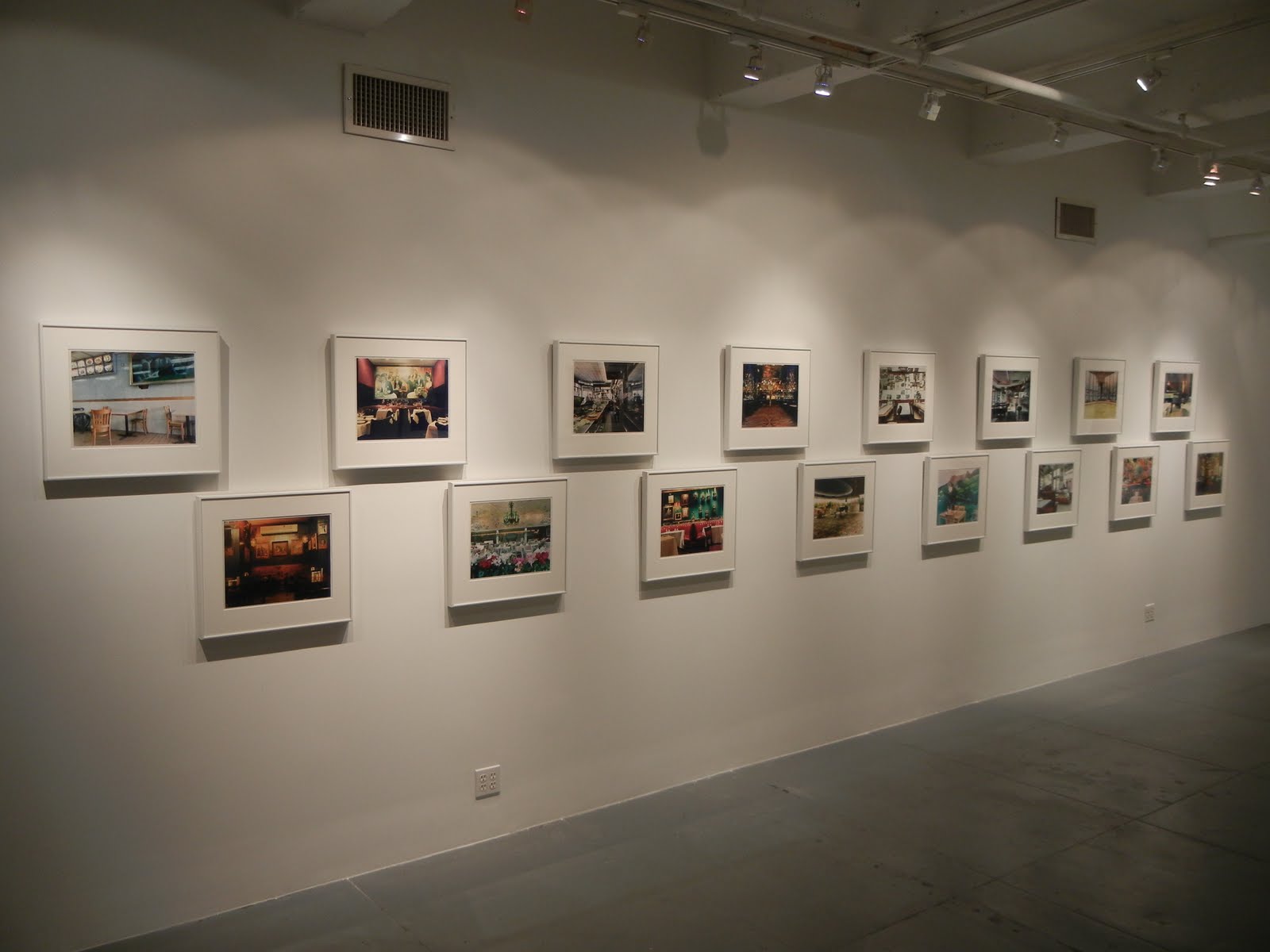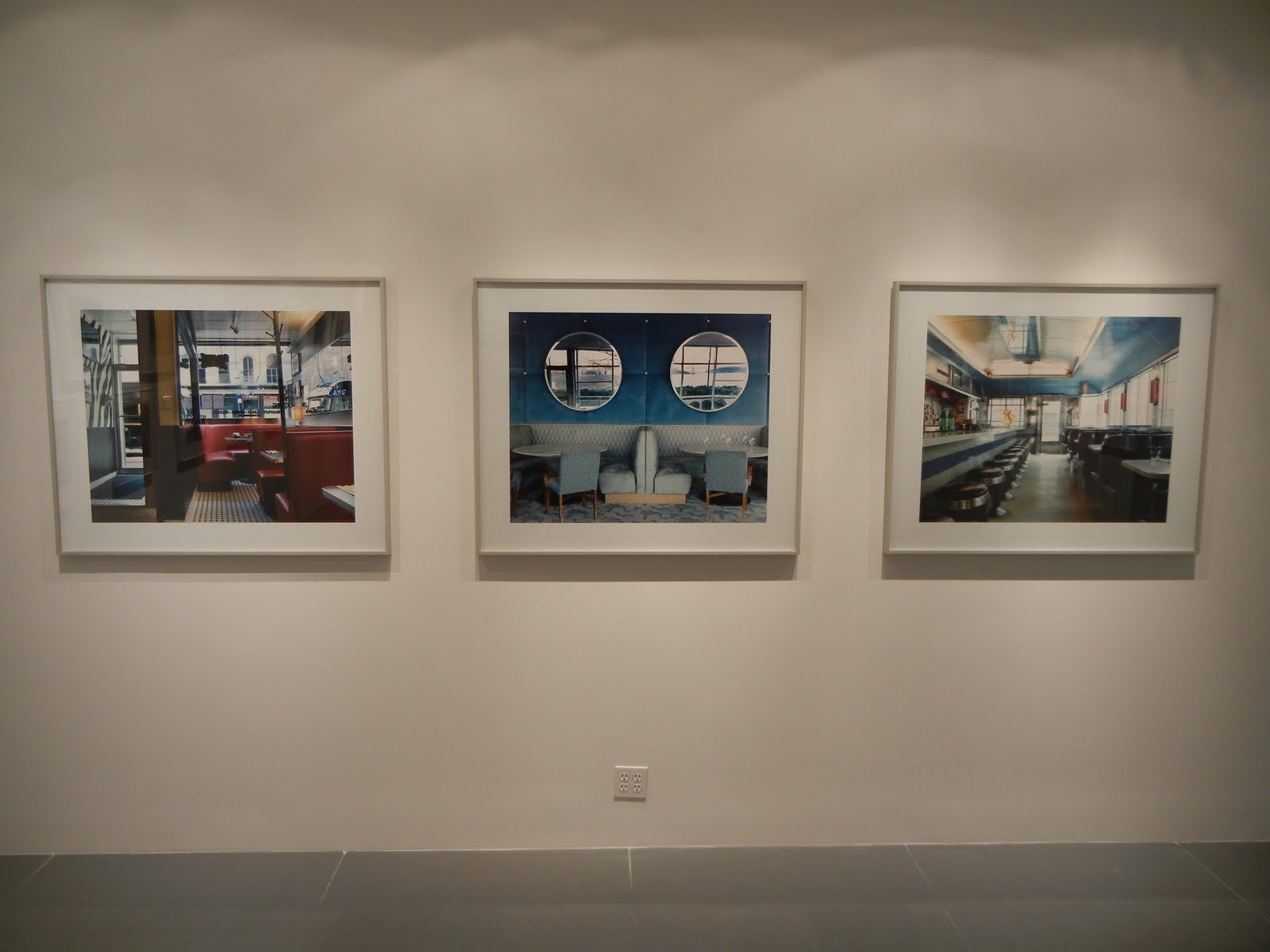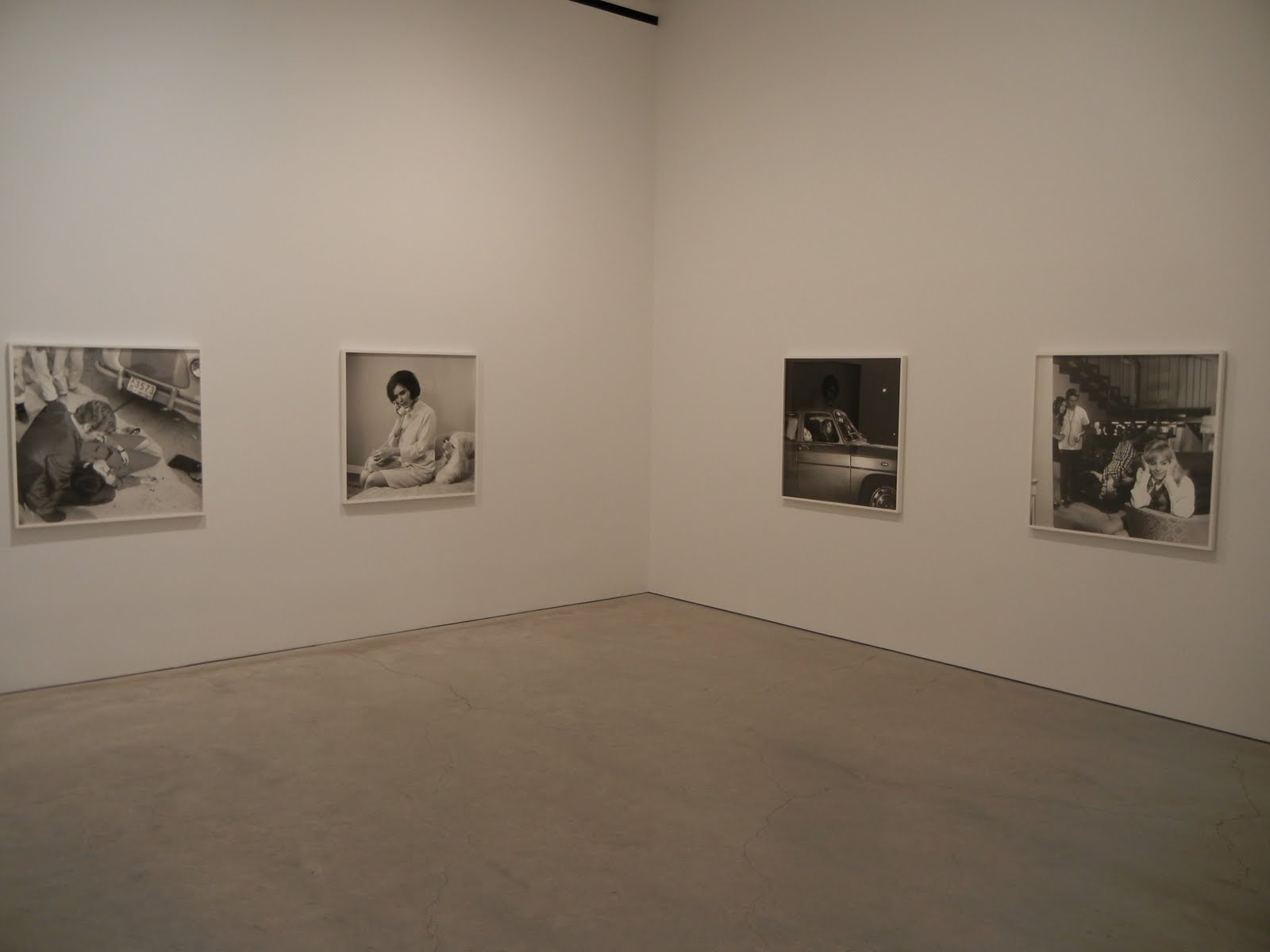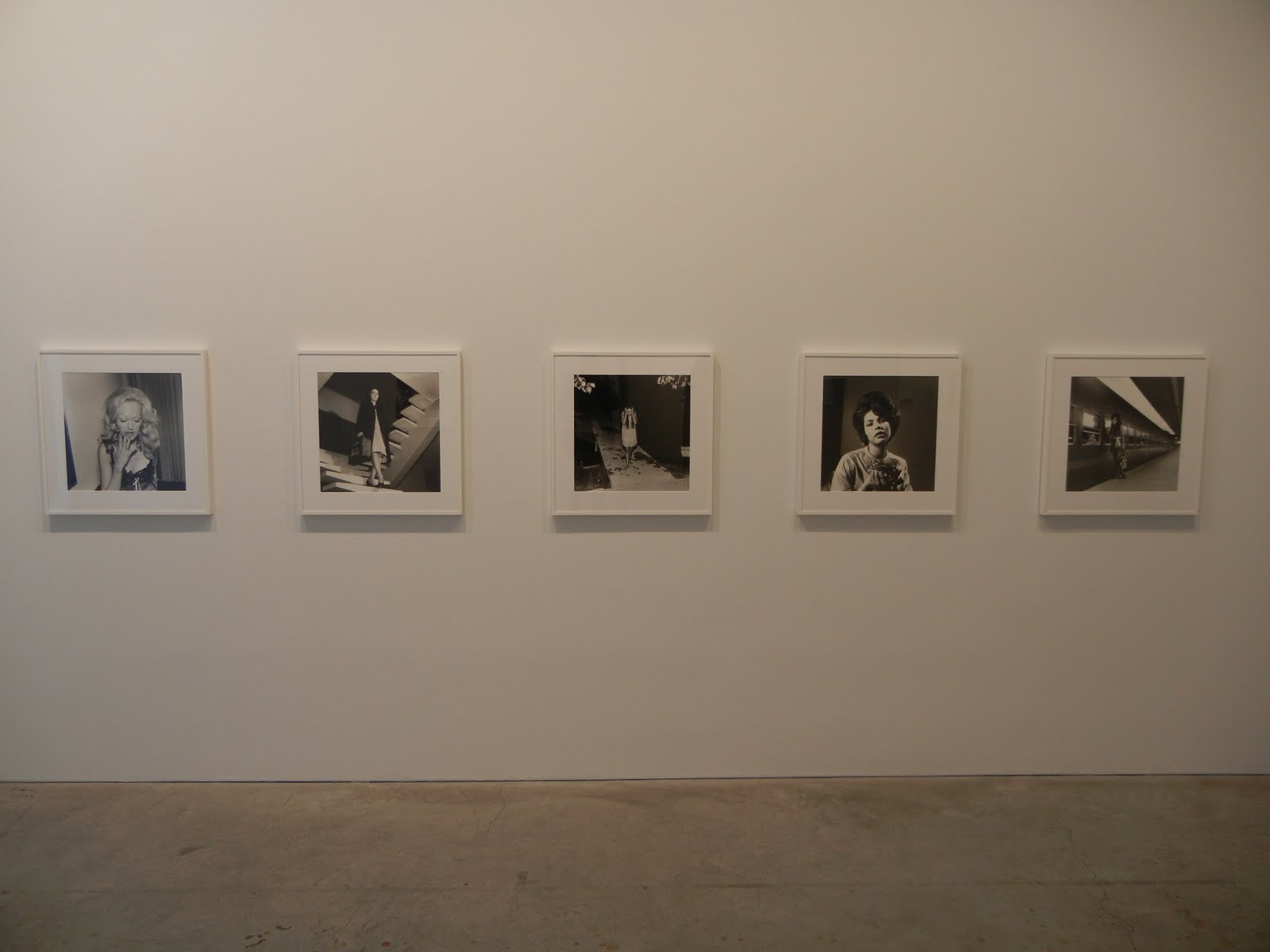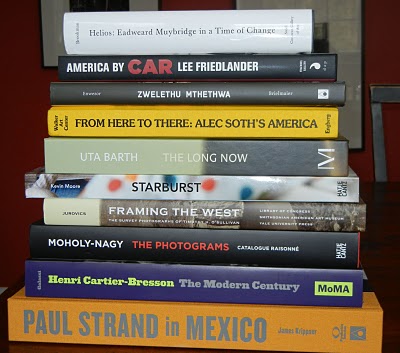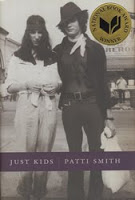2010 was a year of rebounding in the auction markets for photography, with most of the major statistical indicators trending upward, some significantly.
As regular readers know, we write preview and results posts for most of the major photography auctions around the world, including both stand alone photography auctions, and contemporary art and other auctions that contain a meaningful amount of photography. Additionally, we report on photobook auctions, and sales that offer both photographs and photobooks. Last year, we covered 71 individual auctions, from 13 different auction houses.
The auctions we have covered have taken place in Dollars, Euros and Pounds; for the purposes of these calculations, we have converted everything into Dollars (where 1 Euro = 1.33 Dollars and 1 Pound = 1.55 Dollars; statistical purists might argue for specific exchange rates at the time of each sale, but I don’t think using a single summary rate moves the numbers meaningfully). Also, it is clear that photographs and photobooks were offered for sale in many more auctions than we have covered here, perhaps in smaller houses (particularly in Europe), in secondary and tertiary markets, or in antiques and collectibles sales. As such, I think this data likely captures 80-85% or more of the actual public transactions, but certainly not everything.
Across the photography auction market for the entire year, the total sale proceeds taken together were $136,948,680, up by more than 83% from last year’s total of $74,612,997. These numbers were driven by both higher average selling prices and better sell through.
Here’s how the sale proceeds for photography (including premium) were divided up by auction house in the past year:
Christie’s: $49,550,246 (up from $21,231,561 in 2009)
Sotheby’s: $47,476,113 (up from $25,428,318 in 2009)
Phillips De Pury: $27,589,516 (up from $15,957,910 in 2009)
Swann: $3,977,848 (down from $4,061,690 in 2009)
Lempertz: $2,233,602 (up from $989,540 in 2009)
Bonhams: $1,610,648
Villa Grisebach: $1,300,100
Van Ham: $1,176,106
Heritage: $901,518
Bloomsbury: $737,897
Yann Le Mouel: $395,090
The top three houses all increased their gross sales by meaningful amounts, with Christie’s more than doubling its total from the previous year. For those of you who like to do quick math, take roughly 20% or 25% of the numbers above, and you’ll get the approximate amount of total premium that the houses earned as fees on these sales.
These dollar figures can then be turned into dollar-based market share numbers, tabulating the percentage of the photography proceeds in the market which fell to each house. I have added the actual number of individual sales that took place in parentheses as background.
Christie’s (19): 36.18%
Sotheby’s (12): 34.67%
Phillips De Pury (18): 20.15%
Swann (5): 2.90%
Lempertz (2): 1.63%
Bonhams (4): 1.18%
Villa Grisebach (2): 0.95%
Van Ham (2): 0.86%
Heritage (2): 0.66%
Bloomsbury (4): 0.54%
Yann Le Mouel (1): 0.29%
Christie’s increased its dollar share of the photography market by more than 7.7%, while its main rivals stayed relatively flat. 90.99% of the photography market in 2010 was held by the top three houses (Sotheby’s, Christie’s, and Phillips De Pury), with Swann the only other house to capture more than 2.00% of the market.
There were a total of 10,296 photography lots on offer this year across the market, roughly flat with last year’s total of 10,530. (The Top 10 photography lots of the year can be found here.) 6,622 of these sold, while 3,677 failed to sell, making the industry-wide buy-in rate 35.71%, up from 41.28% in 2009. The data below shows the house by house overall buy-in rate, compiled from all the sales at that house. I have added the total number of lots on offer for each house in parentheses as background.
Christie’s (1807): 23.02% (1495 lots and 28.29% in 2009)
Sotheby’s (1509): 23.06% (1100 lots and 38.00% in 2009)
Villa Grisebach (378): 30.42%
Heritage (398): 32.41%
Swann (1420): 38.31%
Phillips De Pury (2162): 39.37% (1619 lots and 36.75% in 2009)
Yann Le Mouel (250): 42.40%
Bonhams (529): 44.42%
Lempertz (481): 45.11%
Van Ham (702): 49.72%
Bloomsbury (660): 55.91%
Another intriguing statistic is the $ per lot sold. One might call this an average selling price, for those lots that actually sold. Across the market, the average selling price for a photograph at auction in 2010 was $20,681.
Sotheby’s: $40,892 (up from $37,285 in 2009)
Christie’s: $35,596 (up from $19,806 in 2009)
Phillips De Pury: $21,013 (up from $15,584 in 2009)
Lempertz: $8,397 (up from $3,974 in 2009)
Bonhams: $5,478
Villa Grisebach: $4,943
Swann: $4,541
Heritage: $3,351
Van Ham: $3,332
Yann Le Mouel: $2,744
Bloomsbury: $2,536
While most of the major auctions houses provide both a low and high estimate for each lot, not every house does this, so it is impossible to tabulate industry-wide data for estimates. For those houses that do provide both a low and a high estimate for every lot, only Christie’s was able to bring in total proceeds (across all sales) higher than the total of the high estimates. Sotheby’s, Phillips de Pury and Villa Grisebach were each able to cover the total of the low estimates on an aggregate basis. Statistics for the big three are below:
Christie’s:
Total Low Estimate: $33,892,395
Total High Estimate: $49,376,225
Total Proceeds: $49,550,246
Sotheby’s:
Total Low Estimate: $33,609,844
Total High Estimate: $49,135,639
Total Proceeds: $47,476113
Phillips de Pury:
Total Low Estimate: $25,746,758
Total High Estimate: $36,853,838
Total Proceeds: $27,589,516
Overall, in a year of stabilization and renewed growth, Christie’s seems to have taken it to its competitors a bit. The house doubled its total sale proceeds for photography from the previous year, dramatically increased its average selling price per lot (even when diluted by a sale of lower priced photobooks), and took share from the market.
Looking forward, if the economic environment continues to slowly but steadily improve, I think we can expect that 2011 will be another solid year at auction. Big numbers are driven by the quality of material that is consigned and the overall confidence in the marketplace; 2010 had the landmark Penn, Avedon, and Polaroid sales (among others) and the beginnings of forward looking optimism. For 2011 to top 2010, we’ll need to see more superlative material come out into the markets, particularly in the realm of photography that is classified as contemporary art, and we’ll have to see a continued positive outlook from collectors.
 JTF (just the facts): A total of 28 color images, framed in black with no mat, and hung in the entry area, front room, and main gallery spaces. The chromogenic prints come in three sizes (or reverse): 20×24 (in editions of 10+3AP), 30×38 (in editions of 5+1AP) and 38×48 (in editions of 3+1AP). The images were taken between 1995 and 2010. (Installation shots at right.)
JTF (just the facts): A total of 28 color images, framed in black with no mat, and hung in the entry area, front room, and main gallery spaces. The chromogenic prints come in three sizes (or reverse): 20×24 (in editions of 10+3AP), 30×38 (in editions of 5+1AP) and 38×48 (in editions of 3+1AP). The images were taken between 1995 and 2010. (Installation shots at right.)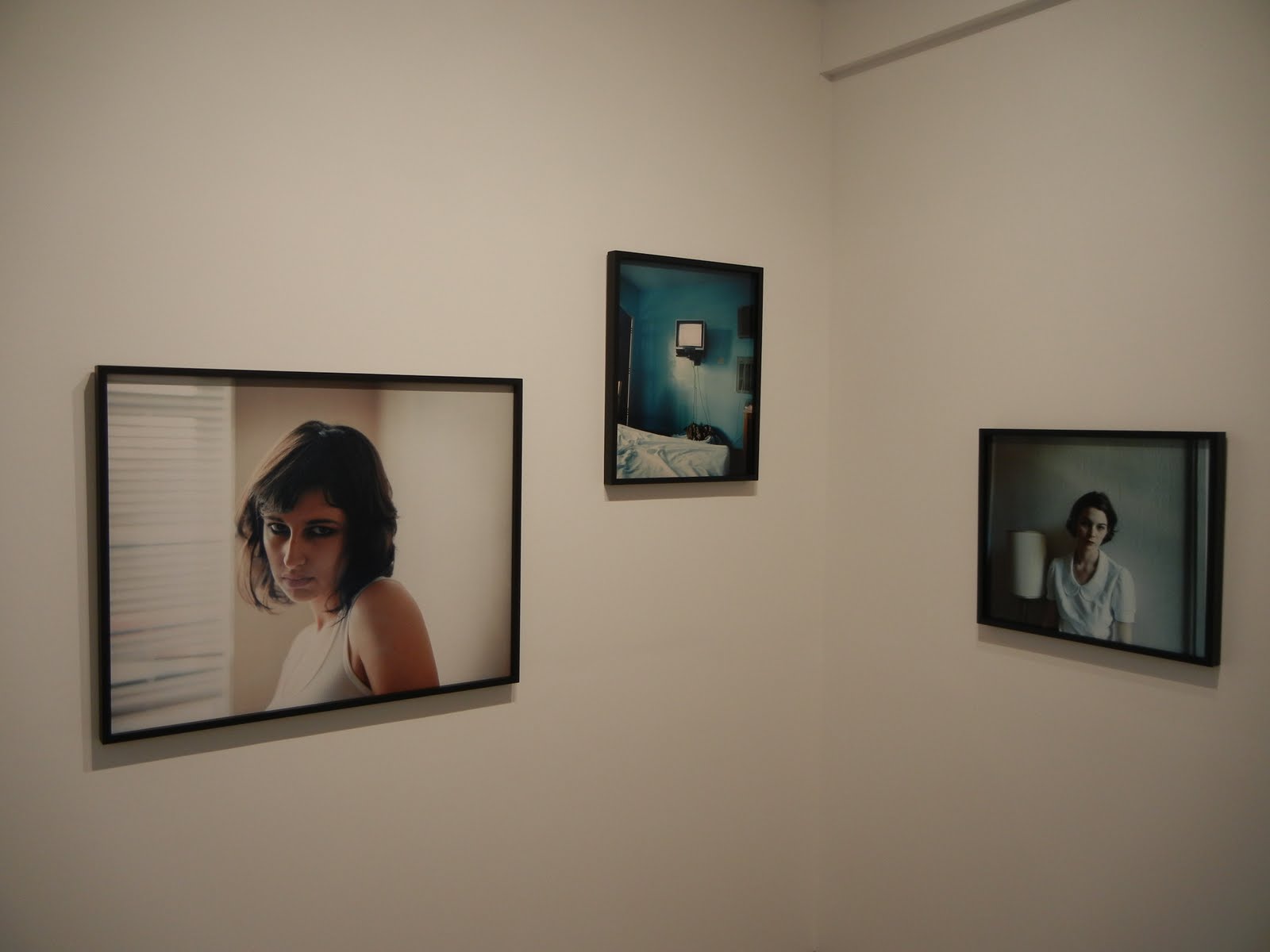 Hido’s careful recontextualization of his work links single images into implied settings and cinematic stories, where a trailer, a barren road, and an austere nude can come together to create a lonely, introspective atmosphere. A similar combination of nocturnal houses with glowing windows, a vacant room or two, and a vulnerable, expressionless woman are woven into somber, open-ended suburban vignettes, where the viewer provides both the connections and the ultimate meaning.
Hido’s careful recontextualization of his work links single images into implied settings and cinematic stories, where a trailer, a barren road, and an austere nude can come together to create a lonely, introspective atmosphere. A similar combination of nocturnal houses with glowing windows, a vacant room or two, and a vulnerable, expressionless woman are woven into somber, open-ended suburban vignettes, where the viewer provides both the connections and the ultimate meaning.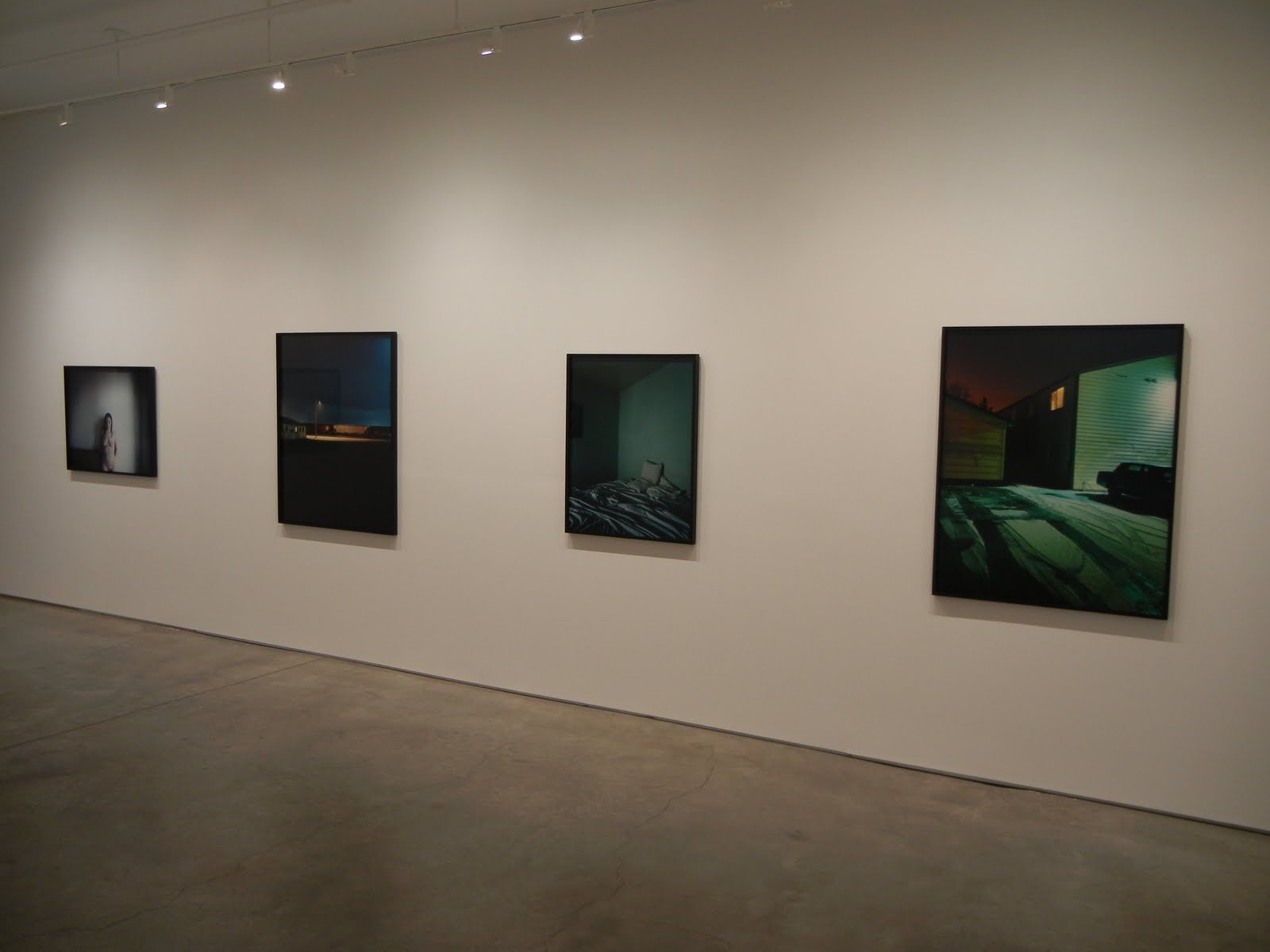 Collector’s POV: The prices for Hido’s work have inched up slightly since his last gallery show here in 2009. As a reminder, the prints come in three sizes, with new prices: $3650 for the 20×24 works, $6000 for the 30×38 works, and $9200, $9800, 0r $11800 for the 38×48 works. Examples of Hido’s work have become more common at auction in recent years, finding buyers between $2000 and $24000.
Collector’s POV: The prices for Hido’s work have inched up slightly since his last gallery show here in 2009. As a reminder, the prints come in three sizes, with new prices: $3650 for the 20×24 works, $6000 for the 30×38 works, and $9200, $9800, 0r $11800 for the 38×48 works. Examples of Hido’s work have become more common at auction in recent years, finding buyers between $2000 and $24000.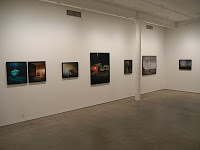 Rating: ** (two stars) VERY GOOD (rating system described here)
Rating: ** (two stars) VERY GOOD (rating system described here)


